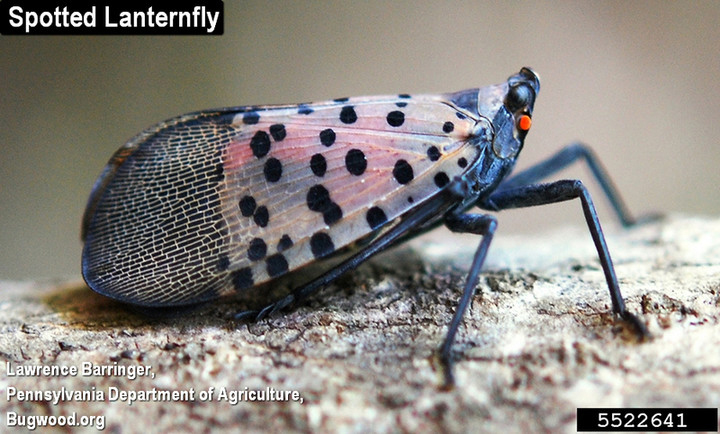BEDFORD, OH — According to the Ohio Department of Natural Resources, the spotted lanternfly (SLF) is an insect from Asia that’s causing trouble in North America. It was first spotted in Pennsylvania in 2014 and has since spread to other states, including Ohio.
SLF feeds on many types of plants, which can cause the plants to wilt, die back, or become more easily damaged. It especially likes the tree-of-heaven, grapes, and hops. SLF also produces a sticky, sugary liquid called “honeydew,” which attracts ants, flies, and wasps. This honeydew can lead to the growth of a black fungus called sooty mold, which can harm grape and hop crops and make the plants look dirty.
SLF nymphs and adults often gather in large groups, which can be a nuisance in yards and farms. Their egg masses are light gray and look like they’re covered in mud. These eggs can be laid on a variety of surfaces, such as tree trunks, buildings, fences, cars, and train cars.
To manage SLF, it’s important to prevent their spread by following quarantines, trapping the insects, removing their favorite plants, and using chemical treatments. If you think you’ve found an SLF, take a picture and report it to the Ohio Department of Agriculture through the Plant Pest Reporting tool or the EDDMapS Great Lakes Early Detection Network app. Reporting them early can help control the spread and protect Ohio’s plants.






